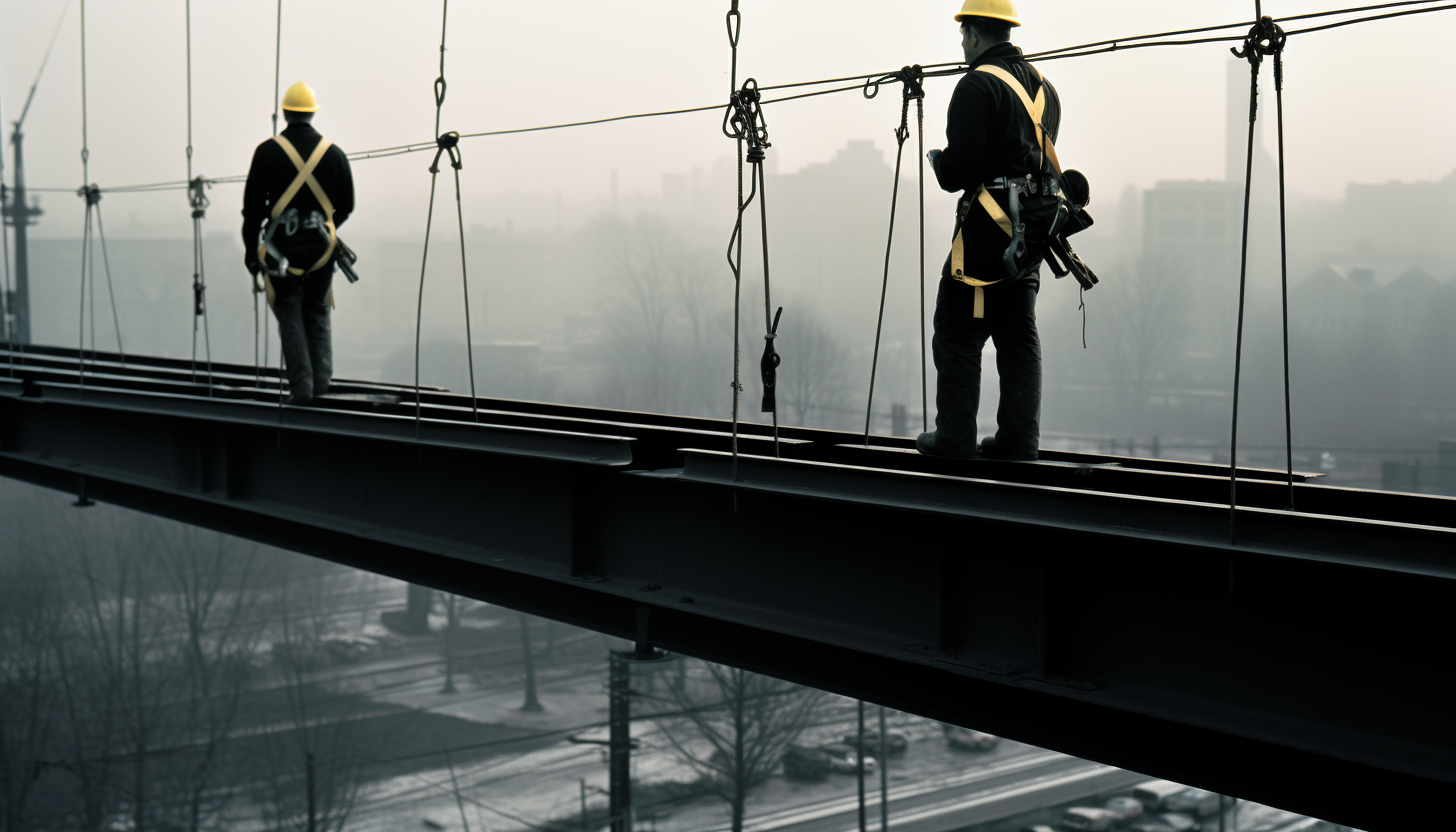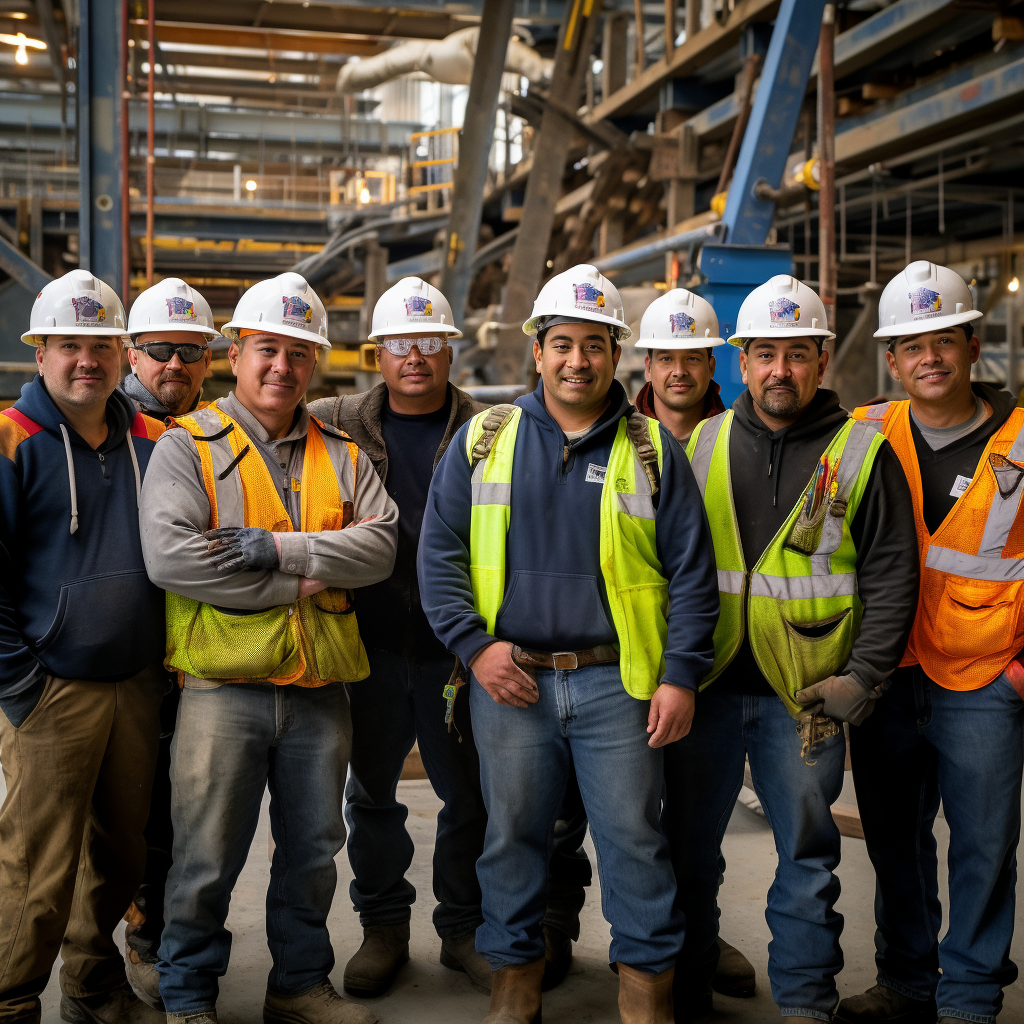Fall protection engineering is a specialized field within construction and industrial operations that focuses on designing and implementing systems to prevent falls, one of the most common causes of serious work-related injuries and deaths. These systems are critical in environments where workers are exposed to vertical drops of 6 feet or more.
The construction industry often involves work at heights, making fall protection engineering an essential aspect of any project. A well-designed fall protection system not only ensures the safety of the workers but also contributes to the overall efficiency and success of a project. It is not just about compliance with safety regulations; it’s about creating an environment where workers can perform their tasks confidently, knowing they are protected.
Fall protection engineering involves the design, implementation, and inspection of systems that prevent or mitigate the effects of falls. These systems can include guardrails, safety nets, personal fall arrest systems, and more. The purpose of fall protection engineering is to ensure the safety of workers operating at heights, minimize risks, and maintain compliance with safety standards.
A fall protection engineer is responsible for designing effective fall protection systems tailored to specific project needs. They consider various factors such as the nature of the work, the working environment, and the height at which the work is performed. They also ensure that the systems comply with all relevant safety standards and regulations. In addition, fall protection engineers provide training to workers on the correct usage of these systems, further enhancing on-site safety.

Fall protection systems can take many forms, each designed to suit specific work environments and tasks. Here are some common applications of fall protection engineering:
Horizontal lifelines are cable systems installed between two anchor points, providing workers with the freedom to move horizontally while remaining securely attached. They are often used in situations where guardrails are not feasible, such as on rooftops or across large spans.
Vertical lifelines, also known as rope grabs, are used when workers need to ascend or descend vertically, such as on ladders or towers. The worker’s harness is connected to the line, allowing them to move up and down while the fall arrest device locks onto the rope in the event of a fall.
Fall protection anchors provide a secure point of attachment for the fall protection system. They must be strong enough to support the weight of a falling worker and can be permanent or temporary, depending on the requirements of the job.
Guardrails are barriers erected along the edge of a surface to prevent falls. They are a passive form of fall protection, meaning they do not require the worker to wear any personal protective equipment or undergo specialized training.
Fall restraint systems prevent the worker from reaching a fall hazard in the first place. They typically consist of a harness connected to an anchor point by a lanyard of a fixed length.
Adherence to safety standards is a critical aspect of fall protection engineering. These standards, set by organizations like the Occupational Safety and Health Administration (OSHA), the International Building Code (IBC), the California Division of Occupational Safety and Health (CalOSHA), and the American National Standards Institute (ANSI), provide guidelines for designing and implementing fall protection systems.
OSHA’s 1910.27 standard outlines the requirements for walking-working surfaces to prevent employees from falling from heights. It covers a wide range of fall protection systems, including guardrail systems, safety net systems, personal fall protection systems, and designated areas.
Compliance with these standards is not just about avoiding penalties or legal issues. It’s about ensuring the safety of workers. Each standard provides a framework for creating a safe working environment, and compliance with them means that you’re doing everything you can to protect your workers from fall hazards.
Designing a fall protection system is a complex process that requires a deep understanding of the work environment, the tasks to be performed, and the potential fall hazards present. Here’s what this process typically involves:
Several factors need to be considered when designing a fall protection system. These include the height at which work will be performed, the number of workers who will be using the system, the layout of the work area, and the nature of the tasks to be performed. Other factors to consider include the type of fall protection system to be used (e.g., guardrails, safety nets, personal fall arrest systems), the location and strength of anchor points, and the equipment’s compatibility with the workers’ other personal protective equipment.
The design process begins with a thorough assessment of the work environment and the tasks to be performed. This involves identifying potential fall hazards and determining the best type of fall protection system to mitigate these risks. The system is then designed to fit the specific parameters of the work environment, taking into account factors like the strength and location of anchor points and the workers’ movement needs. Once the system is designed, it must be thoroughly tested and inspected before it can be used. Workers must also be trained on how to use the system correctly and safely.

At Hanthel Consulting, we bring a wealth of experience and expertise to the table when it comes to fall protection engineering. Our team of seasoned professionals is well-versed in the latest safety standards and best practices, ensuring that the fall protection systems we design are not only compliant but also effective in preventing falls.
Over the years, we’ve worked on a wide range of projects, each with its unique challenges and requirements. From construction sites to industrial facilities, we’ve designed fall protection systems that have kept countless workers safe. Our solutions are tailored to the specific needs of each project, ensuring optimal safety and efficiency.
Our past projects include designing horizontal and vertical lifelines for construction sites, implementing guardrail systems for industrial facilities, and creating fall restraint systems for rooftop work. In each case, we’ve worked closely with our clients to understand their needs and deliver a solution that meets their expectations while ensuring the highest level of safety.
When it comes to fall protection engineering, Hanthel Consulting stands out for several reasons. Here’s why you should consider us for your next project:
At Hanthel Consulting, safety is our top priority. We understand the risks associated with working at heights, and we’re committed to designing fall protection systems that mitigate these risks effectively. But we also understand the need for efficiency. That’s why our systems are designed to allow workers to perform their tasks without unnecessary hindrance.
With years of experience in the field and a team of highly skilled professionals, we bring a wealth of knowledge to every project. We stay up-to-date with the latest safety standards and best practices, ensuring that the systems we design are not only compliant but also effective.
We understand that every project is unique, with its own set of challenges and requirements. That’s why we take a personalized approach to each project, working closely with our clients to understand their needs and deliver a solution that meets their expectations.
Fall protection engineering is a critical aspect of any construction or industrial operation involving work at heights. It requires a deep understanding of the work environment, the tasks to be performed, and the potential fall hazards present. But more than that, it requires a commitment to safety, efficiency, and compliance with safety standards.
At Hanthel Consulting, we bring all of this to the table and more. With our experience, expertise, and personalized approach, we design fall protection systems that not only meet but exceed expectations. We’re not just about preventing falls; we’re about creating an environment where workers can perform their tasks confidently and efficiently.
So, if you’re planning a project that involves work at heights, don’t leave safety to chance. Reach out to Hanthel Consulting today. Let us help you ensure the safety and success of your project.
If you’re planning a construction project and need expert fall protection engineering services, don’t hesitate. The stakes are too high to settle for anything less than the best. Reach out to Hanthel Consulting today. Our experienced team will assess your project needs, provide expert advice, and deliver top-tier fall protection engineering services to ensure your project’s success.
Don’t compromise on your project’s safety. With Hanthel Consulting, you’re choosing quality, professionalism, and trust. Let us help you ensure the safety and success of your project.